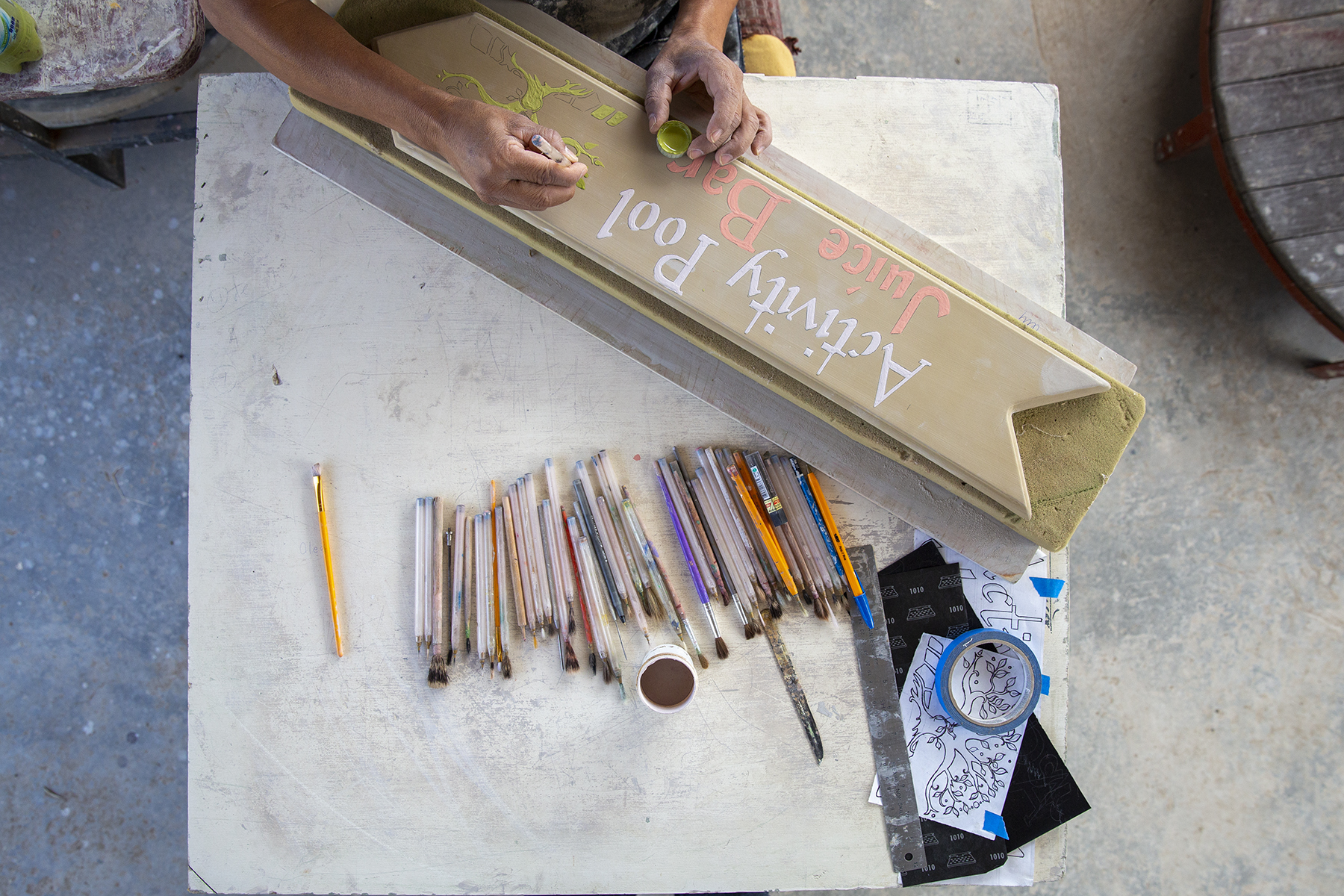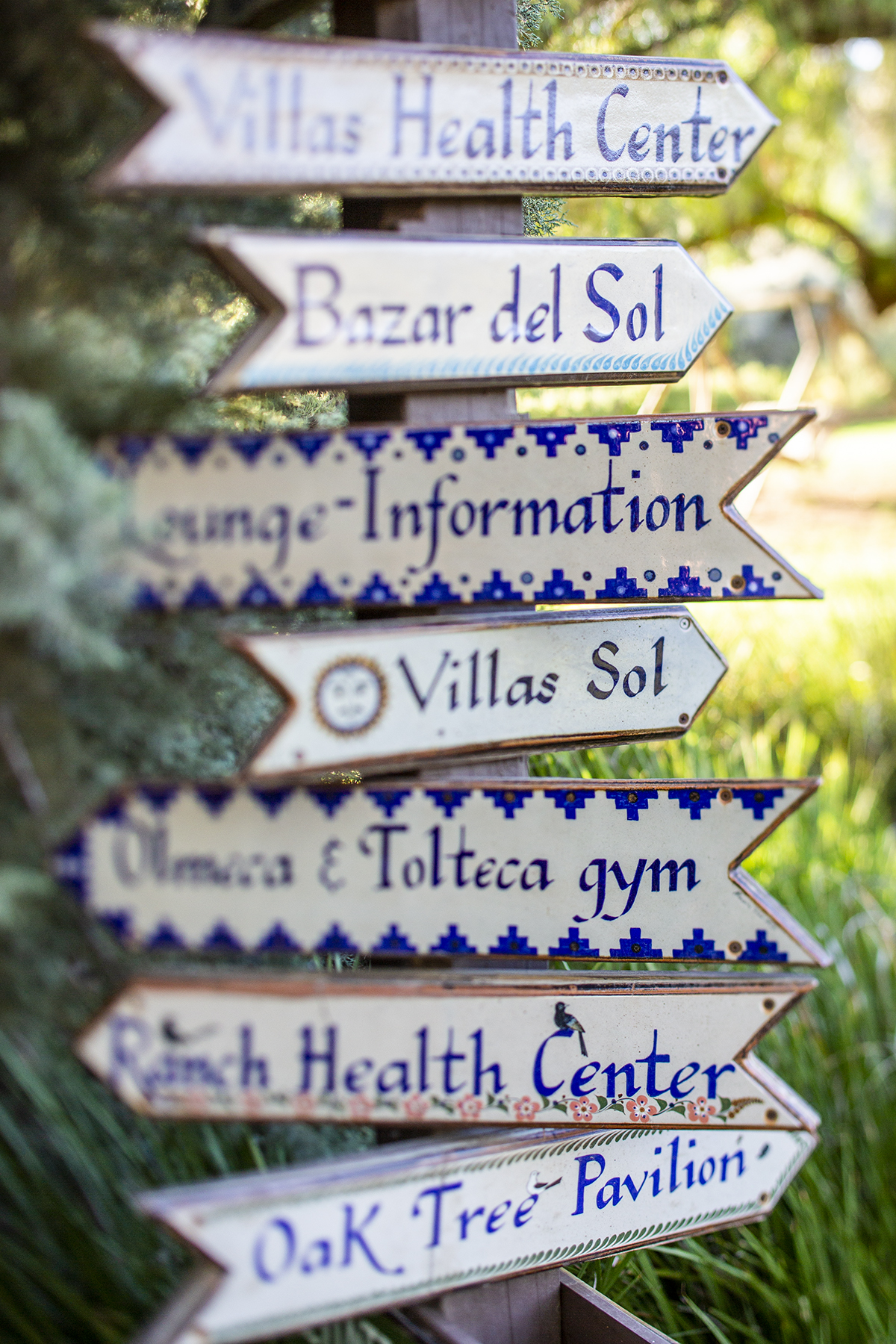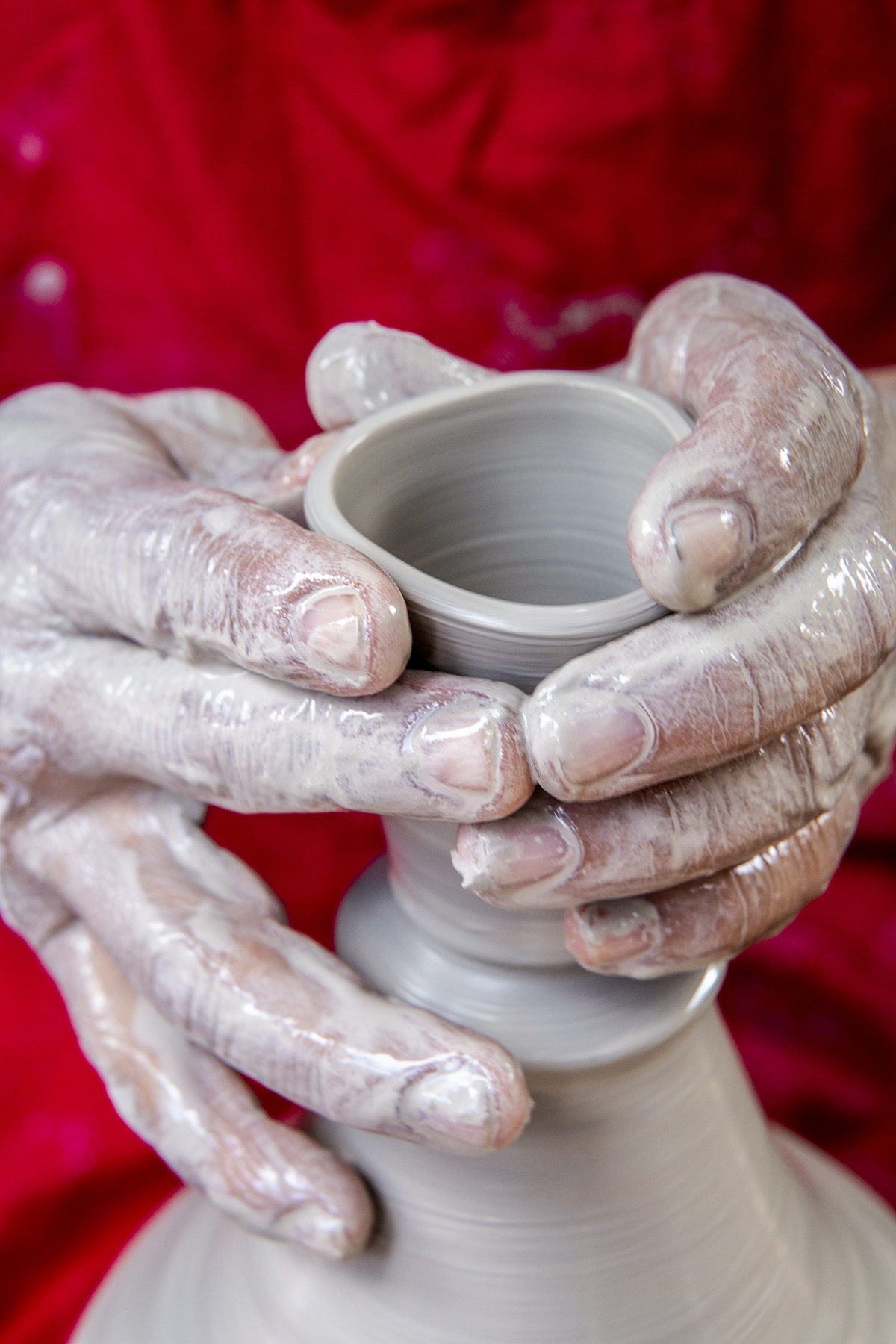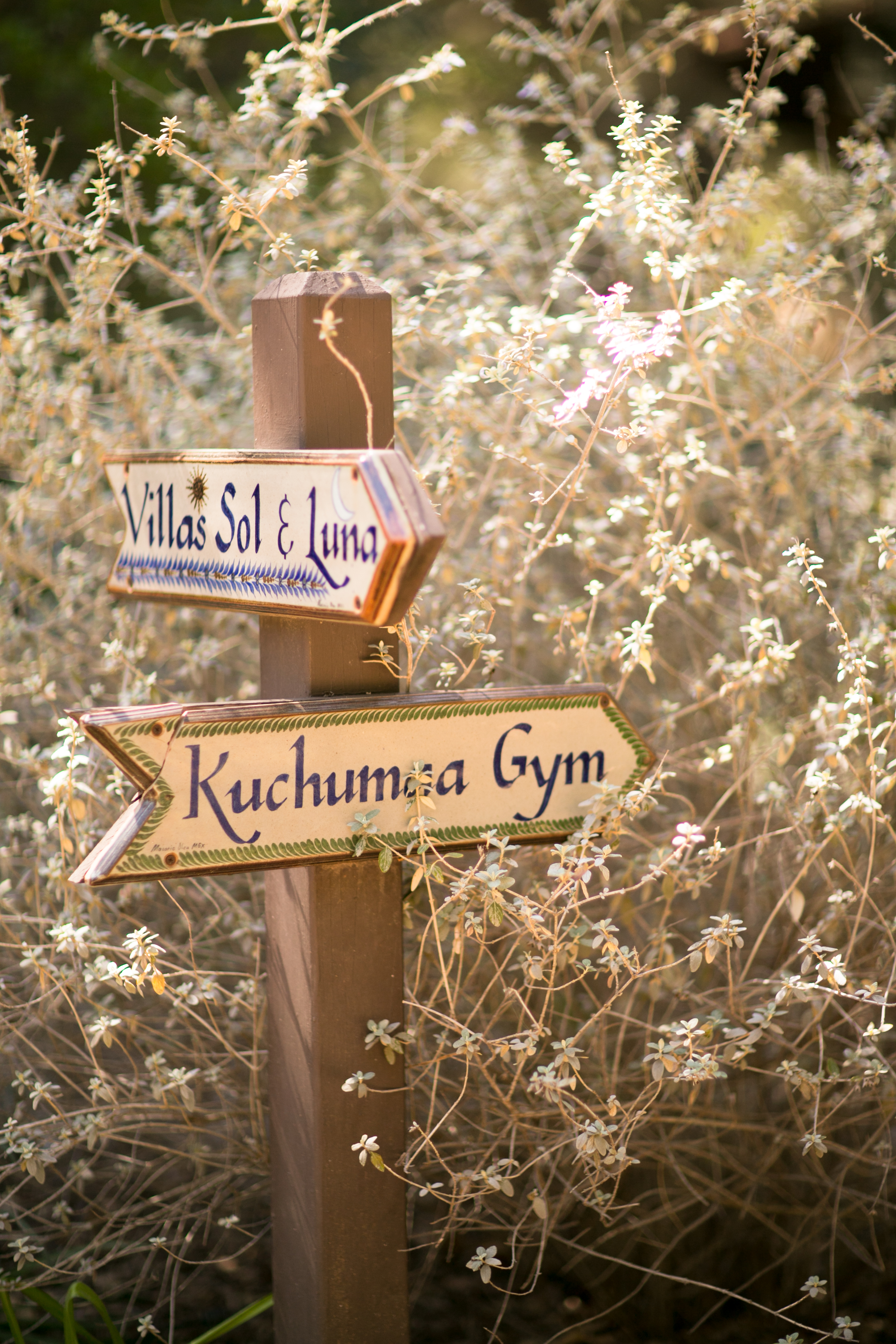






At Rancho La Puerta the hands of Macario guide you.
Macario Olea is a warm and charming man with a kind wit and a charitable personality. At just over 50 years old, he’s the ceramicist for Rancho La Puerta. He creates the signs that show guests the way to the different gyms, pools and rooms. The dark blue lettering against the shiny-ash color of the signs is as much a manifestation of his heritage as they are part of The Ranch experience.
As a craftsman at The Ranch, Macario spends his day manipulating Tonala clay he has shipped from his hometown. Tonala, in the state of Jalisco, in western Mexico, is one of the centers for ceramics in Mexico. The area produces this favored fine silky-clay that is the pride of the area’s artisans. “There’s no other material like it,” he says. Barro de olor, it’s called, the clay of smell or the aromatic clay, known for the rich earthiness that permeates from it. As he kneads and wedges the clay, the muddy scent takes him back to his childhood and the hills around Tonala, reminding him of his mother and father.
As a child, when he finished his homework, he would help his mother, a potter, make mugs, plates and figurines. His mom learned from her mom and so on; from one generation to the next these skills were handed down, taught and mastered. On weekends he’d join his father as they hiked into the hillside and loaded their pair of donkeys with wood to sell to the potters and craftsmen for their kilns.
Back in his studio, at Rancho La Puerta, three quails are flying and running around while he works. My three Musketeers, he calls them. He incubated them and cares for them and they’ve bonded to him as if he were their mother. When they lose sight of him or can’t hear him working in his studio they call out to him, listening for him to whistle back a reassurance that he’s close.
One quail, the youngest and the runt of the flock, hops onto the sign Macario’s painting and tries to huddle against him. He scoops up the young chick and places her in his jacket where she leans into him and warms up. The others, a little plumper and more confident, fly up to the rafters and watch as he works below.
“Each job is a challenge,” he says, “[it’s] only with energy and a promise to myself can I get the job done. I promise myself to learn and become better. It’s important for me to be a craftsman. Making my art, painting, making things with clay, all these things will stay for a long time after I’m gone. You can discover clay art from centuries ago. You can read about the people who made things from clay. I hope my art can stay for hundreds of years too. I can stay alive through pieces of my ceramics and the signs at Rancho La Puerta.”